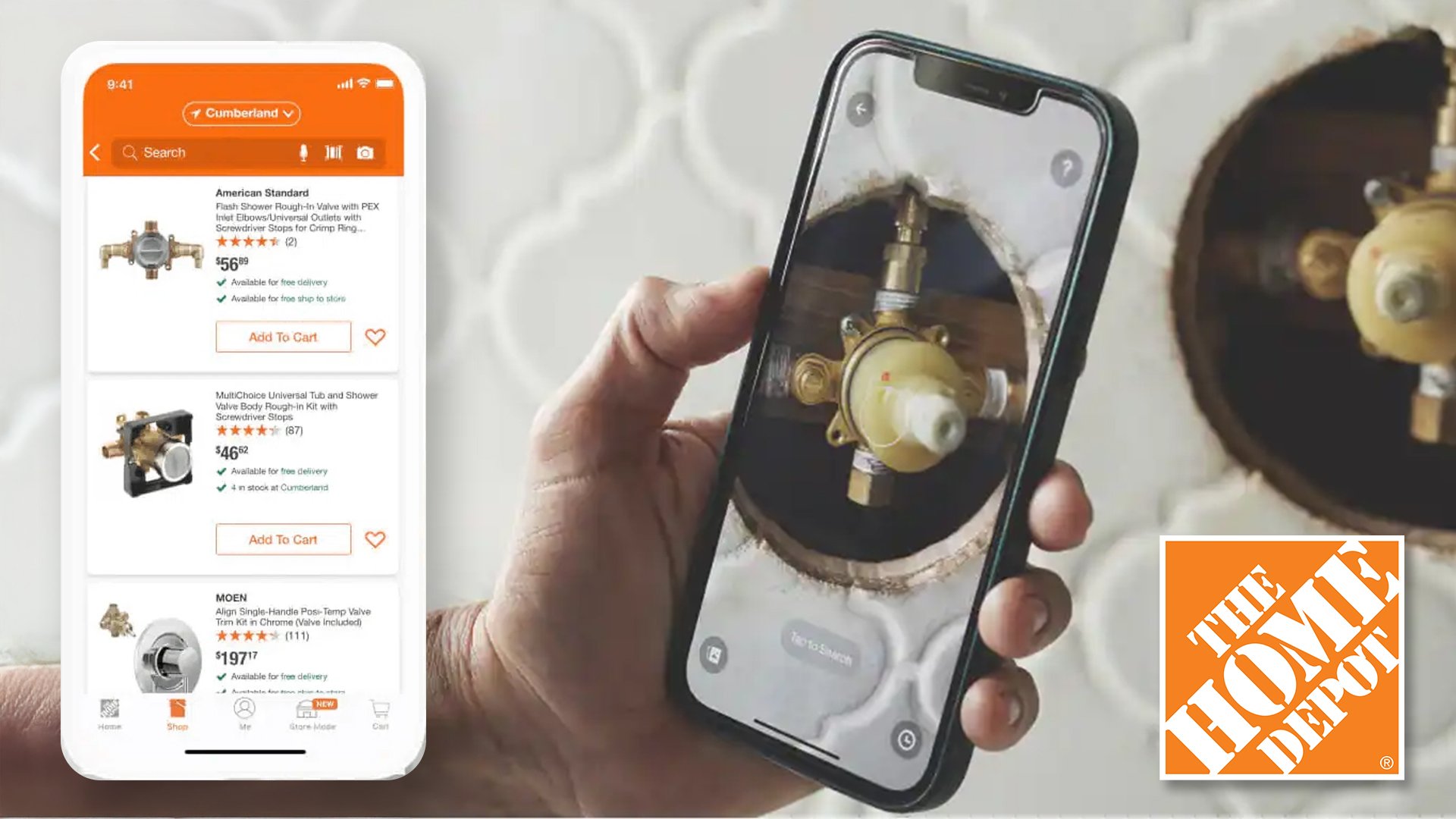A Successful Strategy for Fast and Accurate Spare Part Search
Quick Summary Industrial machine downtime is costly—and spare part identification delays are a primary culprit. The traditional spare part search...
3 min read
Linda Piercy
:
Jun 4, 2025 11:47:59 AM

Visual search is no longer a niche innovation—it’s now a mainstream technology driving real business value across industries. With leading retailers like Home Depot at the forefront, visual search is transforming how consumers find, identify, and purchase products. In this post, we explore why visual search is thriving in 2025, the technology behind it, use cases that matter, and how your company can get ahead of the curve.
Visual search adoption has surged, especially in retail, manufacturing, and logistics
Home Depot is setting the standard with powerful image recognition in its mobile app
Technologies like AI, computer vision, and contextual search are fueling accuracy
Use cases include product lookup, part identification, and inventory accuracy
Businesses adopting visual search report faster service, fewer returns, and higher sales

Visual search enables users to search for industrial parts information using images instead of text. Whether it's identifying a product, locating a part, or solving a real-world problem, visual search uses AI and image recognition to deliver instant results based on what the camera sees.
Unlike traditional image recognition, visual search layers metadata, machine learning, and product databases to deliver highly relevant and actionable results. This isn’t just about identifying objects—it’s about understanding context, part hierarchies, and user intent.

According to industry reports, visual search usage has surged over 300% in retail and logistics over the past 24 months. What’s fueling the momentum?
Millennials and Gen Z users expect search to be fast, mobile-first, and intuitive. Visual search delivers on all three fronts by cutting out guesswork and making product identification instant.
Enterprises are using visual search to reduce returns, improve inventory accuracy, and support field teams with part recognition—even when documentation is missing.

Home Depot’s mobile app has integrated visual search features to help customers identify screws, bolts, tools, and fittings—just by snapping a photo. This eliminates the need to search by vague product names or model numbers.
Visual search reduces friction for DIYers and professionals alike, helping users locate exactly what they need without specialized product knowledge. This improves customer experience and increases sales conversions.

Visual search combines several advanced technologies to deliver accurate results:
Neural networks trained on vast product catalogs can distinguish between similar-looking items with high precision.
This powers the core image processing functions, including object detection, segmentation, and classification.
Partium’s engine, for example, doesn’t just match visuals—it understands context like manufacturer, category, and fitment.

While retail leads the charge, other industries are quickly embracing visual search:
Technicians use visual search to identify unknown spare parts without part numbers, speeding up maintenance and reducing downtime.
Drivers and mechanics use it to find replacement components for older vehicles with incomplete documentation.
Field teams can identify damaged or unknown parts on-site without needing a product database or manual lookup.

Wondering how to implement visual search in your operation? Start here:
Where are users struggling to find products or parts? That’s where visual search can deliver quick wins.
Look for platforms like Partium that specialize in enterprise-ready visual search for parts, components, and equipment—not just consumer goods.
The best solutions integrate easily into mobile apps, web tools, and support systems—making rollout fast and scalable.
Visual search isn’t just a tech trend—it’s a real-world solution solving practical problems. From retail to manufacturing, the benefits are tangible: faster search, better accuracy, fewer returns, and happier users. Companies like Home Depot are proving that when you eliminate friction in search, you unlock massive ROI.
If you're exploring visual search for your business, these handpicked resources—both from Partium and trusted industry leaders—will give you deeper insights into the technology, strategy, and real-world applications driving its growth in 2025 and beyond.
Visual search is changing the way people interact with products, data, and digital systems—moving beyond text-based input to enable search through images. According to What is Visual Search? Examples, Applications and Trends, visual search leverages technologies like computer vision, AI, and image recognition to instantly identify objects and retrieve relevant information based on a user-provided photo.
Instead of typing out vague product names or part numbers, users can simply snap a picture of a component, item, or object—and visual search systems will locate the exact match or suggest the most relevant results.
Visual search isn’t just a consumer convenience—it’s becoming an enterprise differentiator. From e-commerce to manufacturing, industries are embracing image-based search to cut down on misidentification, reduce service delays, and streamline workflows. As AI models become more accurate and contextual, the possibilities for real-time visual interactions are expanding fast.
Partium is the leading provider of enterprise-grade visual search technology for complex parts and components. Whether you're managing industrial equipment, supporting customers in retail, or optimizing your field service, our platform helps users identify the right part instantly—no serial number, no product manual, just a photo.
Ready to reduce search friction and boost productivity?
Or watch our quick demo video below to see visual search in action:
🎥

Quick Summary Industrial machine downtime is costly—and spare part identification delays are a primary culprit. The traditional spare part search...

Quick Summary The global Right to Repair movement is accelerating as industries battle ongoing supply chain disruptions, trade restrictions, and...

Quick Summary Discover four game-changing technologies reshaping home improvement retail in 2025 Learn how AI, AR, mobile apps, and visual...